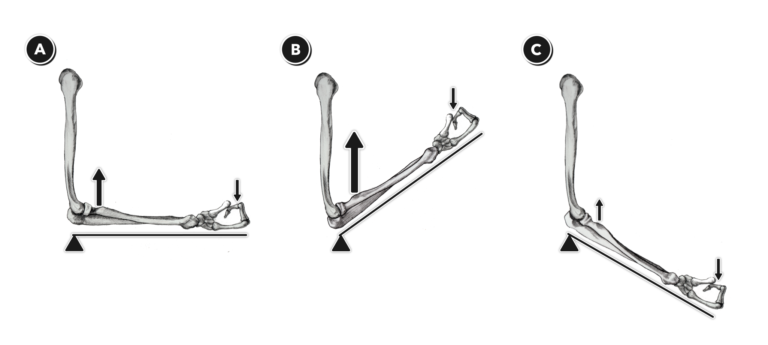A third-class lever is another example of a simple machine comprising a beam placed upon a fulcrum. The third-class lever differs from the second-class lever in that the distribution of forces is changed in relation to the fulcrum. In third-class levers, the fulcrum remains at one end of the beam—however, the force of the effort is now located between the fulcrum and the force of the load.
If the moments of the effort and load are equal, then the system is in equilibrium: No movement occurs (Figure 1A). Note that for equilibrium to occur, the force of the effort must be greater than the force of the load, due to the load’s mechanical advantage. If the effort contributes a greater moment than the load, the beam will pivot in the direction of the force of the effort (Figure 1B). If the load contributes a greater moment than the effort, then the beam will pivot in the direction of the force of the load (Figure 1C).
Third-class levers are plentiful in human anatomy. One of the most commonly used examples is found in the arm. The elbow (fulcrum) and the biceps brachii (effort) work together to move loads held with the hand, with the forearm acting as the beam. In this anatomical example, when the contracting bicep creates a moment about the elbow equal to the moment of the load, the system is in equilibrium. The forearm remains static, and the load does not move (Figure 2A). If the moment created by muscular contraction is greater than the load supported by the hand, then the forearm and load will rotate upward, as in a curl (Figure 2B). If the moment created by the load is greater than the muscular contraction, the forearm and load will rotate downward (Figure 2C).

